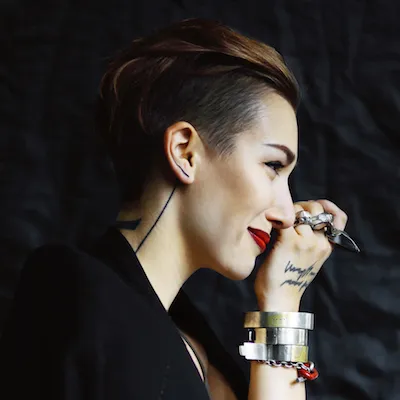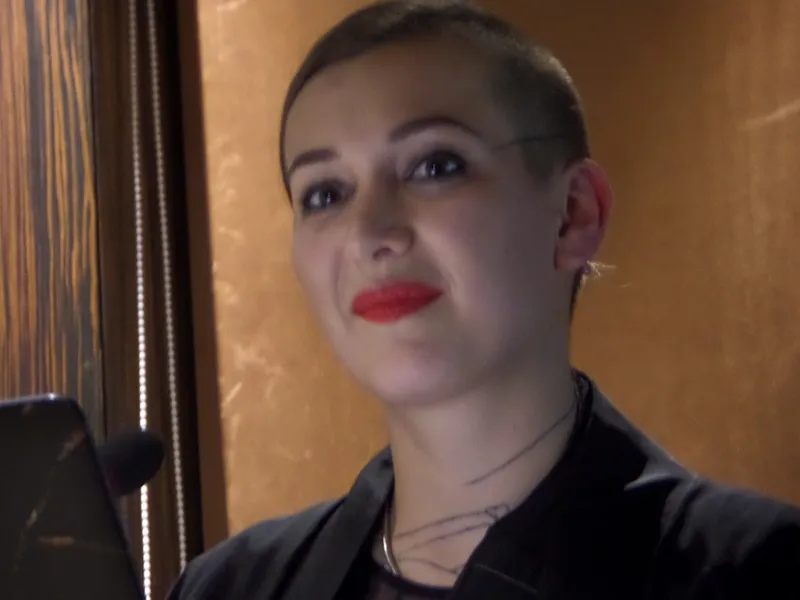‘We are not just watching the future, we are in the future’ – Monika Bielskyte, digital media guru
Monika Bielskyte has been described as a ‘futurist with an artist’s eye and an inventor’s mind.' The co-founder of All Future Everything was in Bengaluru recently to speak at a curtain raiser for the upcoming DesignUp conference. With a clientele that includes Hollywood production companies (Ridley Scott Associates, Universal), technology giants (CERN, Intel, Telefonica), design companies (Rick Owens, Aston Martin), and governments (UAE), it’s no surprise that her vision and expertise were sought in the run up to India’s go-to conference for Design-in-Tech and Design-For-Tech.
Monika’s focus is on immersive media technologies and digital formats of reality: AR/MR/VR. She prototypes culturally diverse, socially and environmentally engaged future worlds for the entertainment industry, tech firms, and cities. Here are 10 takeaways from her wide-ranging and thought-provoking talk.
The future is opportunity
“The future is not a dead end, but an opportunity space – a chance to create a paradigm shift,” said Monika. Westerners seem to have a negative view of the future, but people in emerging economies tend to be more optimistic, she observed. She herself was born in Soviet-era Lithuania, and saw the future as one of opportunity, despite ongoing hardships.
Mixed reality, shared reality
We are living in a mixed reality world, where digital overlays on the physical world lead to richer meanings and interactions. Devices don’t just capture what we are looking at, but ‘know’ what they are looking at. “The future of immersive media technology is the future of computation,” said Monika.

Computation, like UX, permeates everything that we do. Content and context are no longer just frames, but a matrix of perception and action. “We are not just watching the future, we are in the future,” she added. Screens will no longer need to look flashy to attract our attention, they will be embedded and enmeshed in our surroundings and our selves.
Emotion and content
The emerging new worlds will have a significant impact not just on content and semantics but emotion and symbolism. Innovation is not a gadget, and developers should go beyond techno-fetishism. Co-presence and co-creation can create new kinds of emotional bonds in virtual and mixed worlds.
Education and sense-making
The borderless nature of digital media makes it possible to create new educational avenues and spaces for children. This is particularly valuable for differently-abled children, eg. those who are paraplegics. All children should be given tools to feel and tell their own stories.
The new worlds can help move from imagination to conversation, collaboration and transformation in areas like education and healthcare. The future of education is not just creating domain expertise but teaching people how to learn.
“The greatest inventions lead us to invent even more,” said Monika.
Diversity is key for success
Much of emerging media technology and its depiction is shaped by white males in Hollywood and Silicon Valley, but we need more diversity across lines of gender, race, class, abilities, and geography. Women in particular are more sensitive to issues of personal space, which is impacted by emerging AR/VR technologies.
Rename, reclaim
Many of the acronyms for emerging technologies are still in their early phases, and can be reinterpreted and reframed in contexts such as co-creation. For example, ‘Internet of Things’ can be ‘Internet of Beings’; ‘ML’ (machine learning) can be ‘collaborative learning’; ‘VR’ (virtual reality) can be ‘shared reality’; ‘singularity’ should be thought of as ‘plurality’; and ‘UX’ (user experience) should be ‘HX’ (human experience). “VR will take off once it is designed not for isolation, but for the community,” predicted Monika.
Urban space
VR can be used not just as a new world, but as collaborative workflow to create better cities. Cities desperately new kinds of creative spaces for diverse collaboration and physical expression. It is also important to design digital possibility spaces within the physical world through VR/AR overlays.
UX to HX
Users are not just data points, but individuals with abilities and power. Technological innovation without humanitarian evolution leads to a dystopian future, she cautioned. AI is not necessarily a magic pill, nor is VR the ultimate empathy machine, or blockchain the solution to end all corruption.
Interfaces
VR interfaces still have a long way to go before being accepting by broader audiences. Contact and comfort factors need to be revisited. This could take another five to ten years, and goes beyond new types of screens.

New meaning of work
The meaning of work is changing, particularly for youth. Work is not just about jobs, salary, and possessions – but about meaningfulness, empowerment, impact, and shared values. The role of play in work contexts cannot be over-emphasised.
A sense of inclusion in all fields is the future. The future of entertainment is creating new worlds, not just new products or projects; the future of VR is collaborative platforms for work and play.
Creativity is a means to hack the human experience. The smart future and creative future will lead to a regenerative future. “Design the culture of tomorrow which we will be inhabiting,” concluded Monika.
You can find more details about DesignUp conference here.







